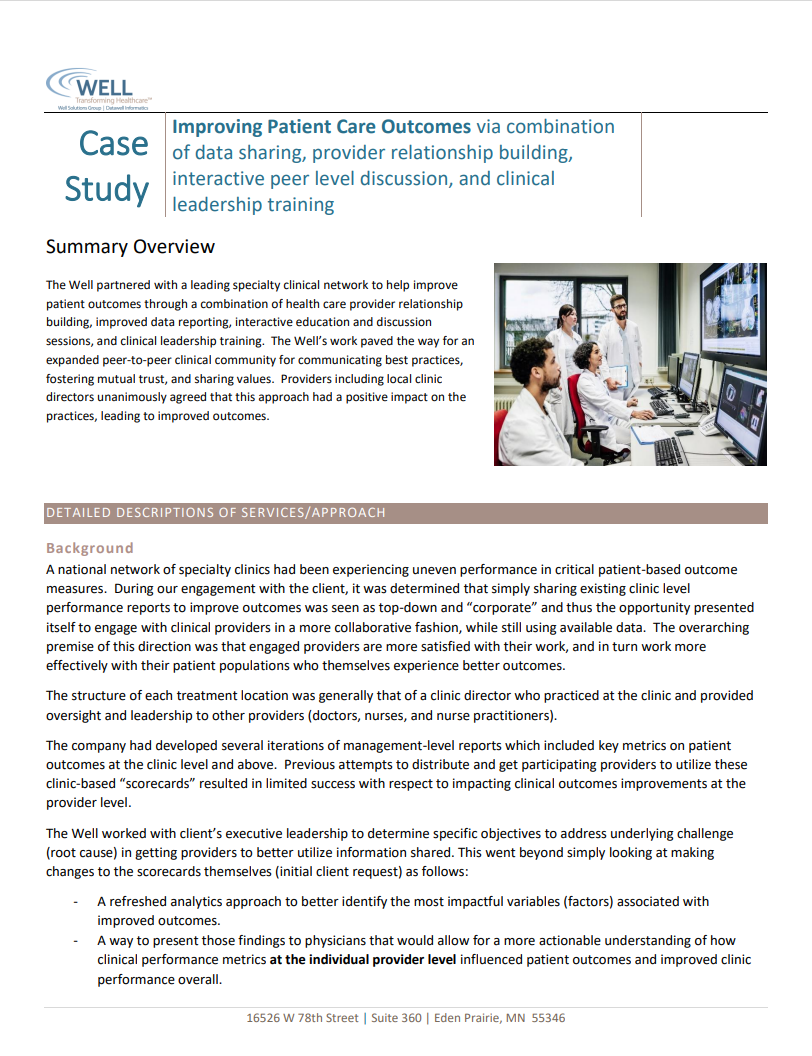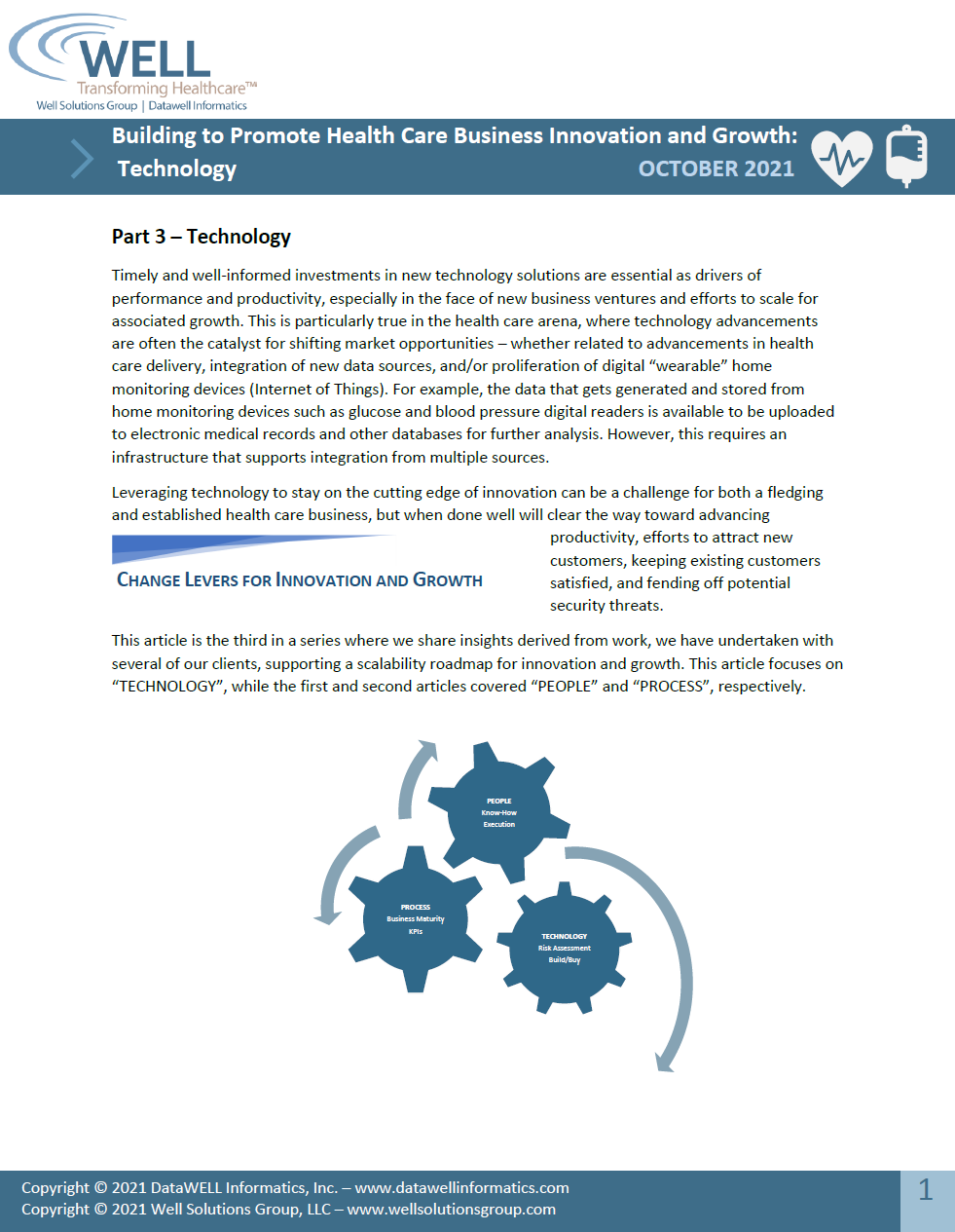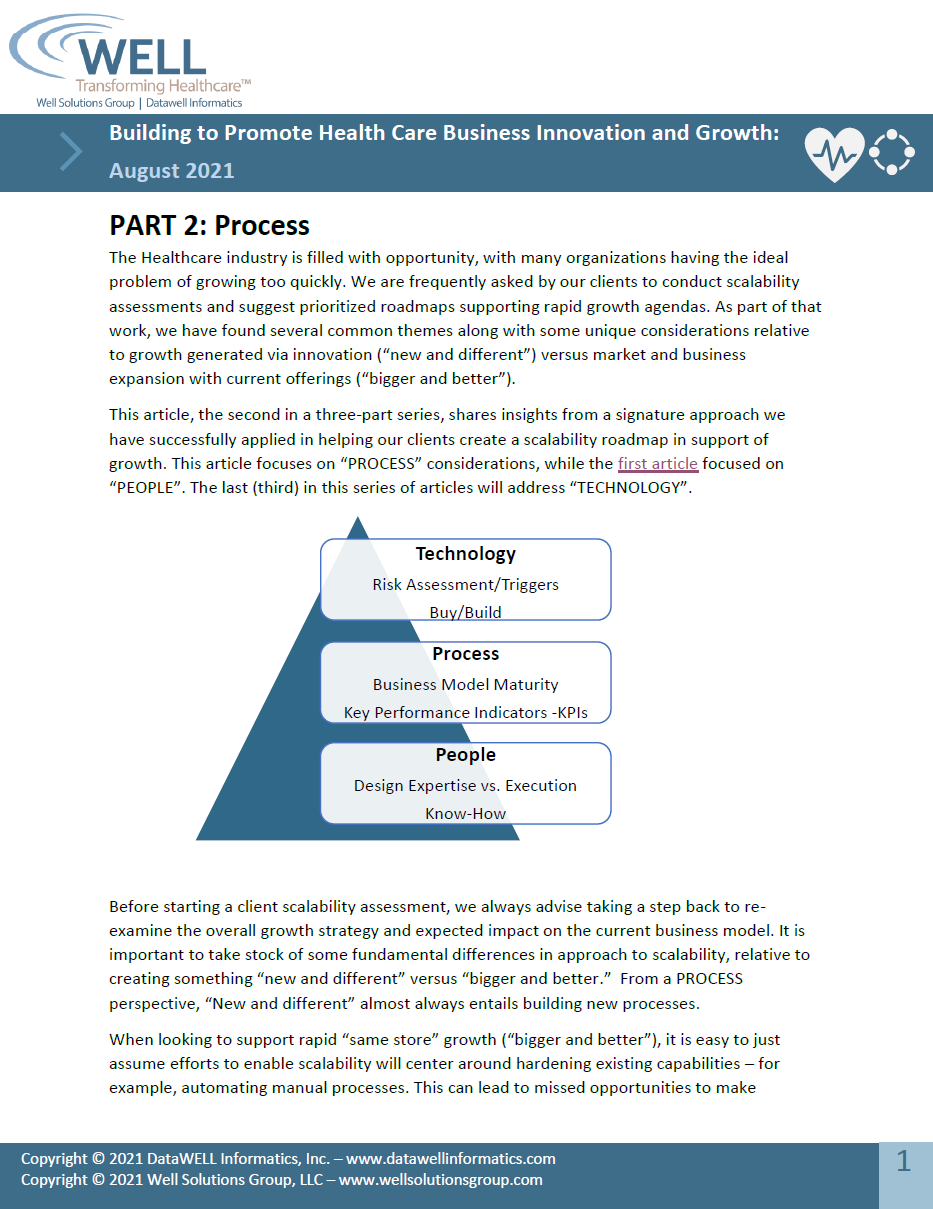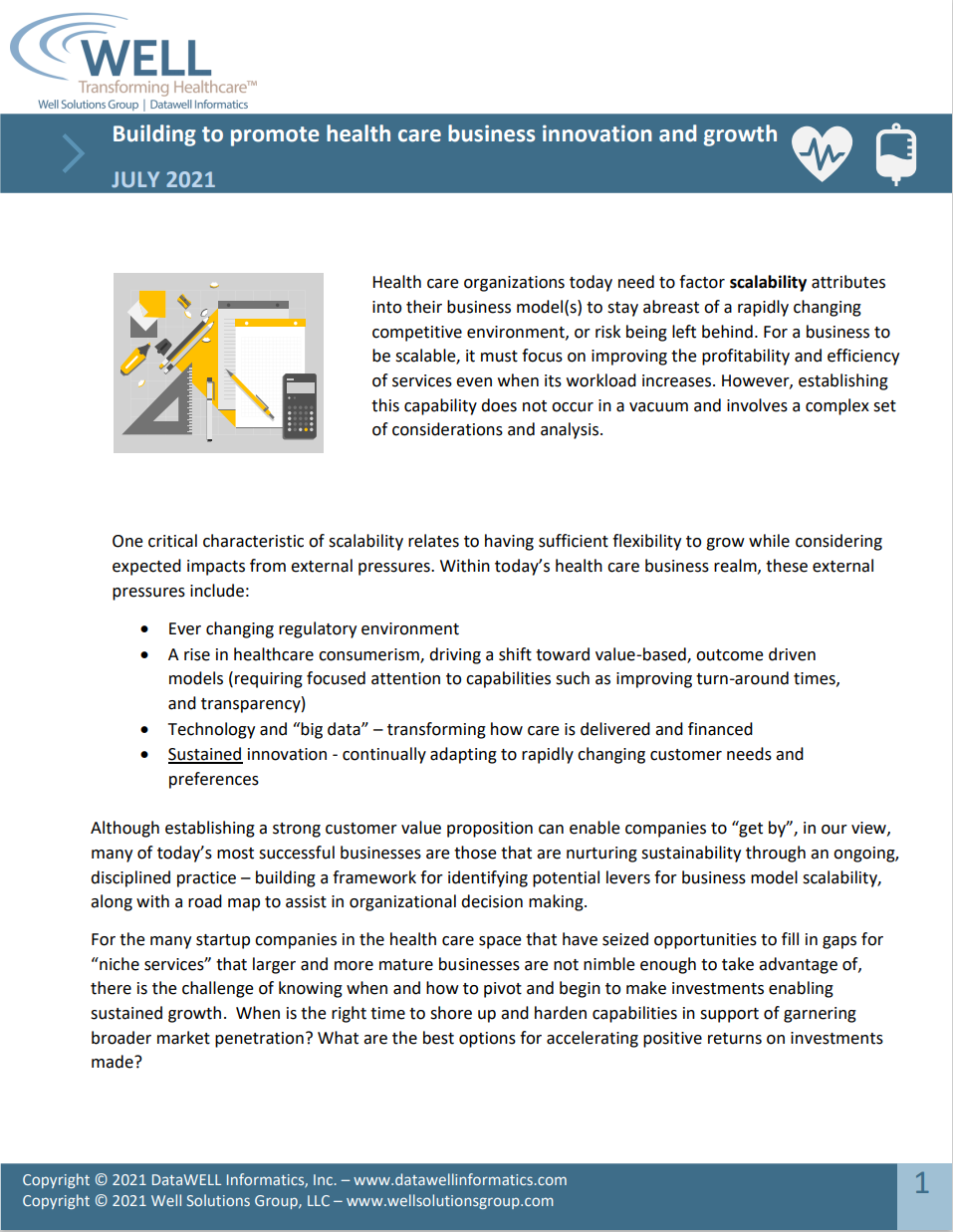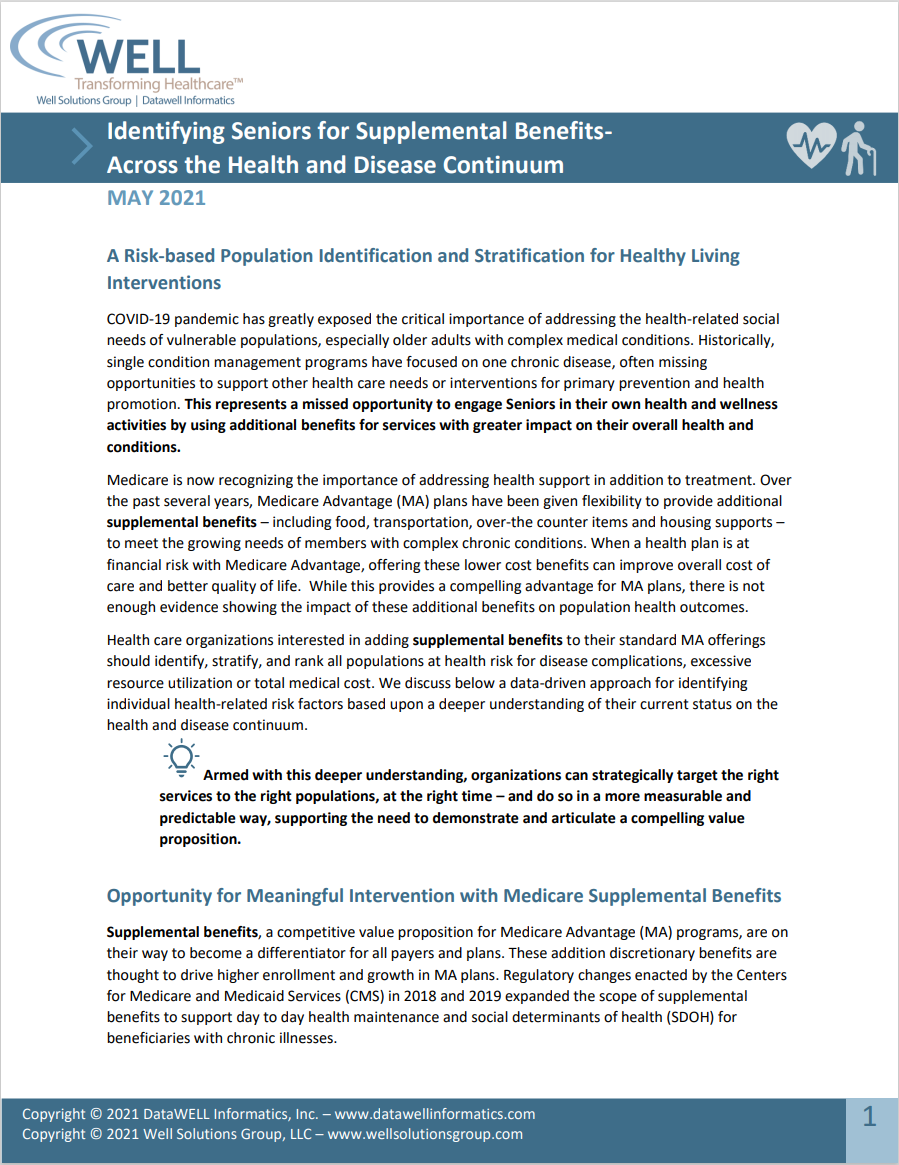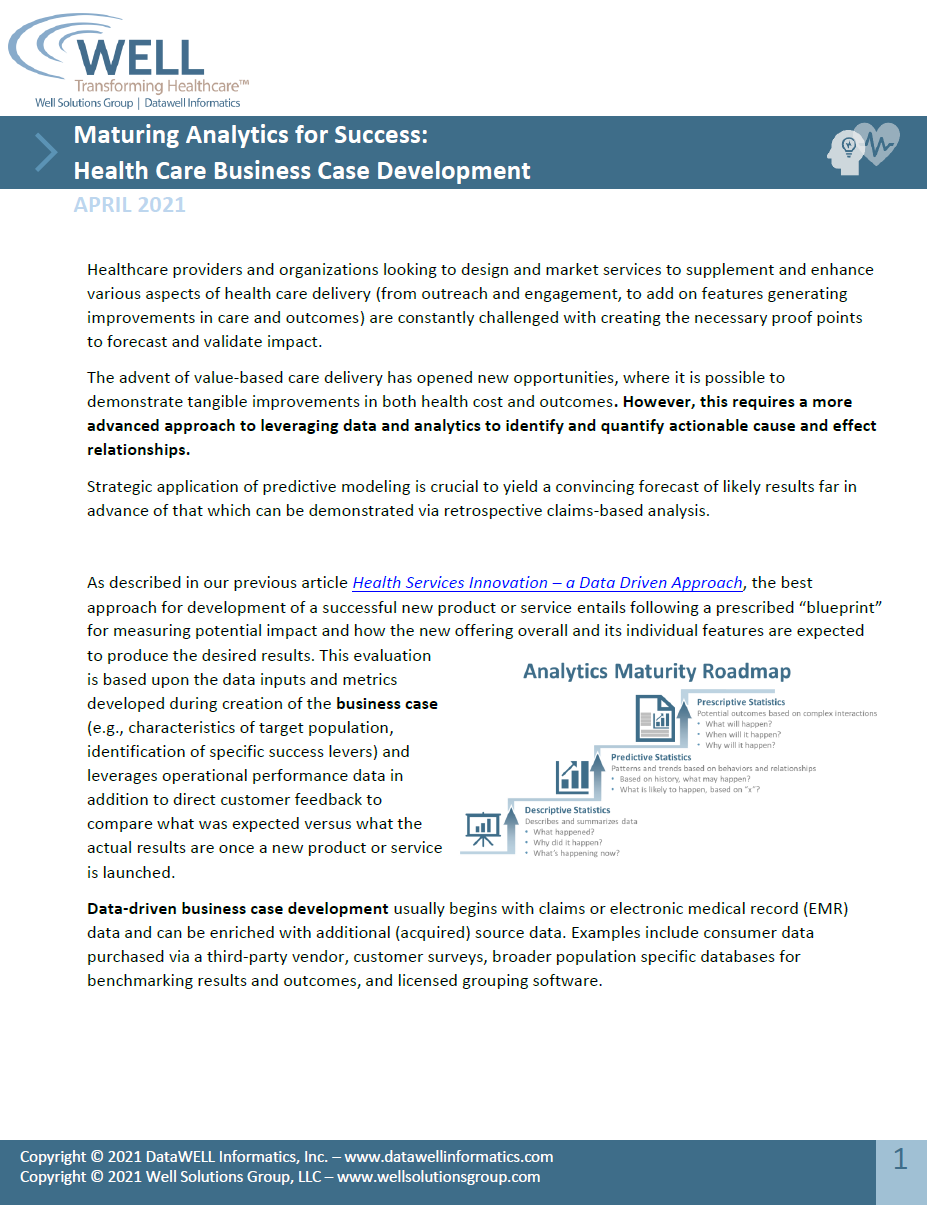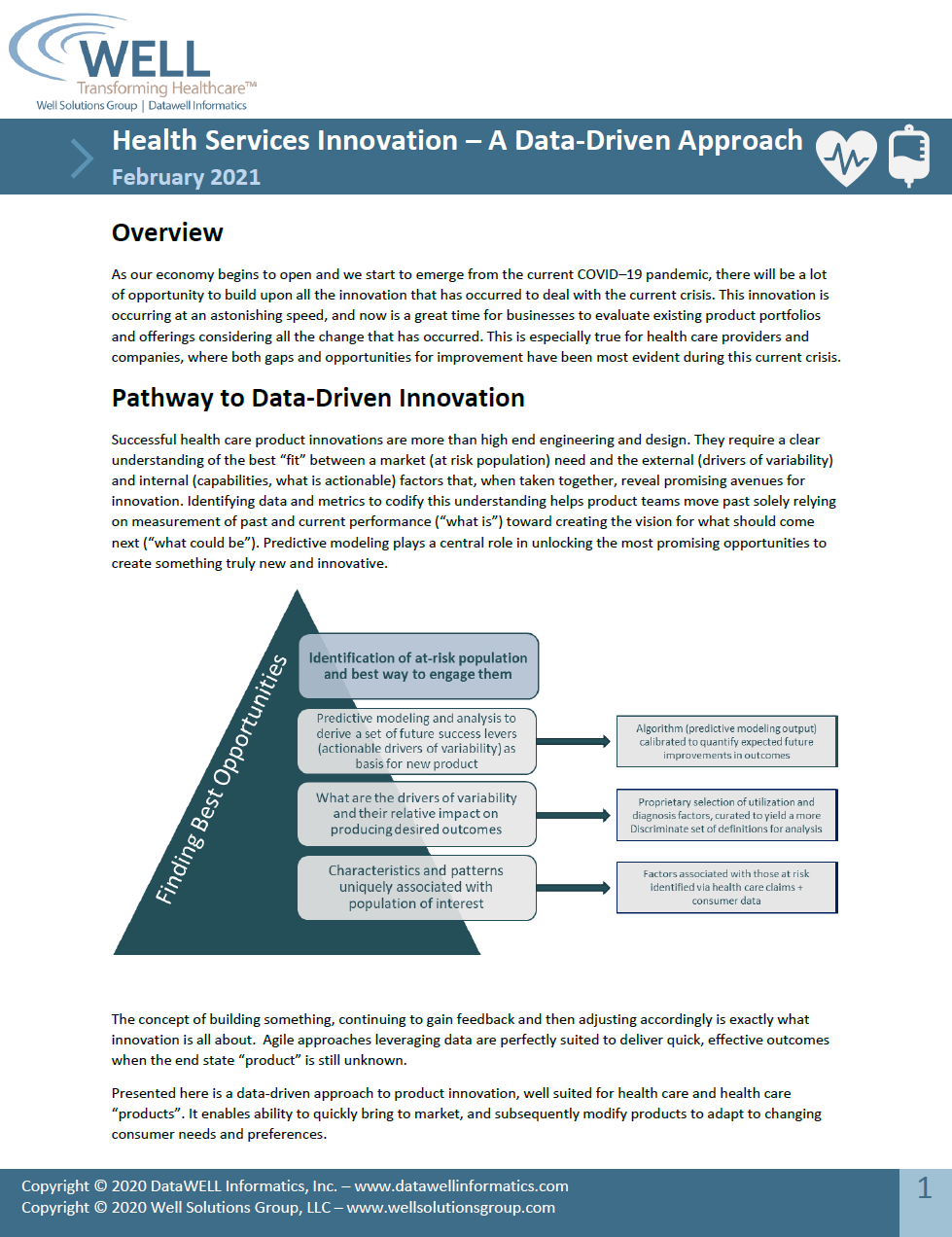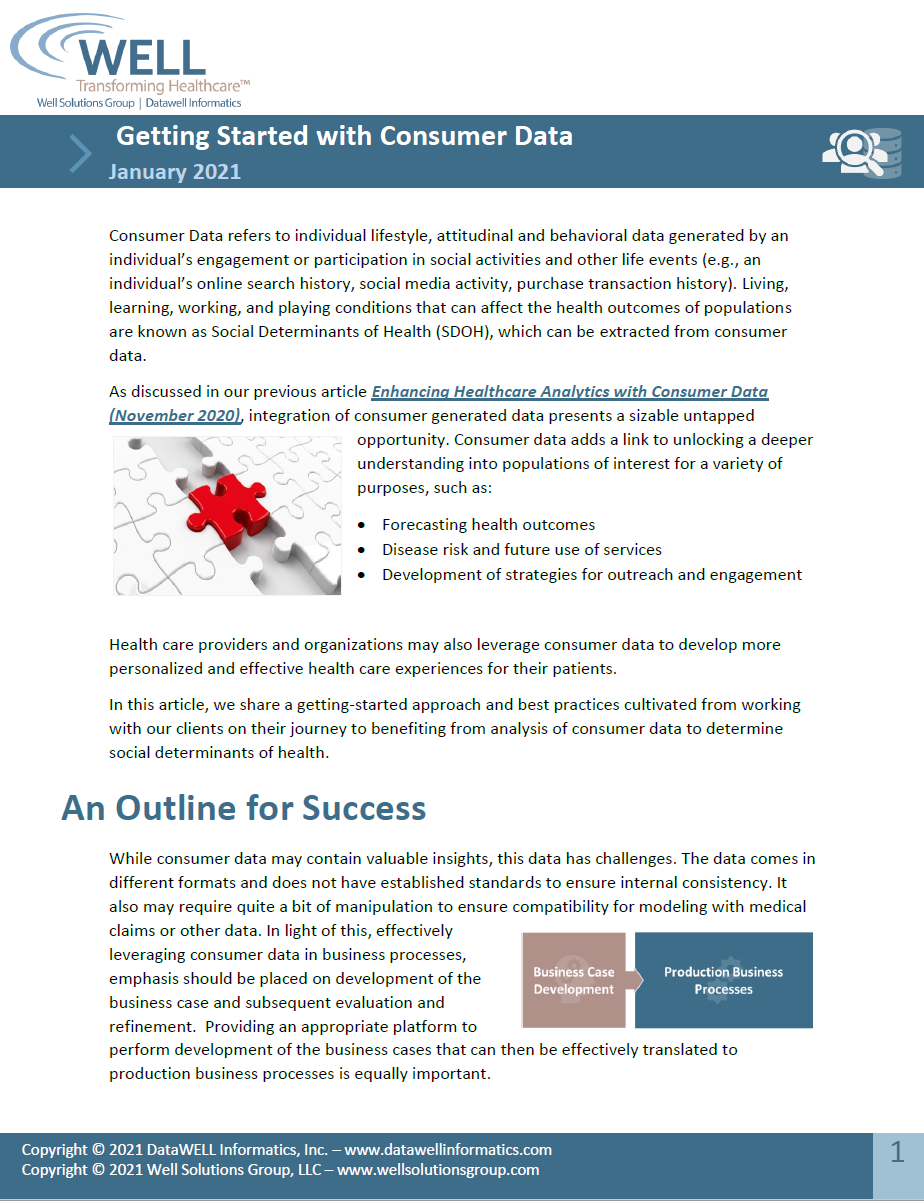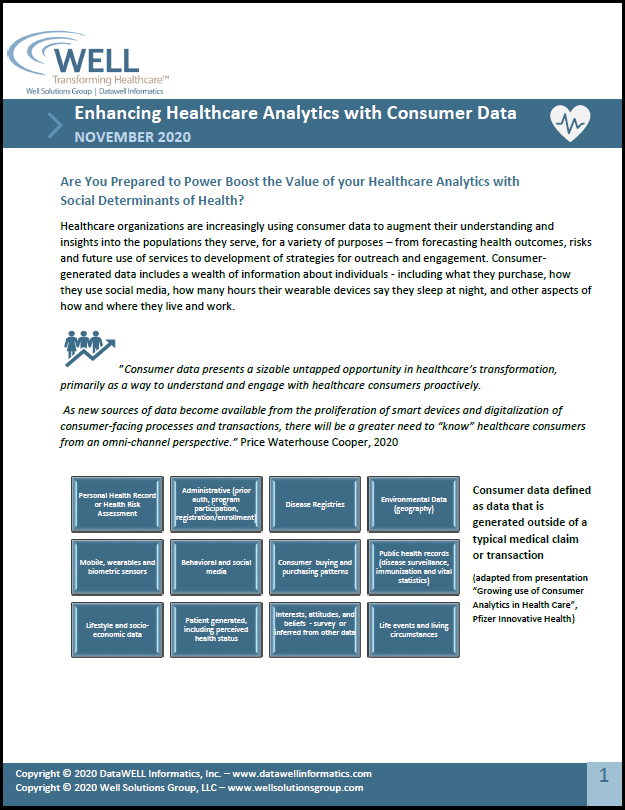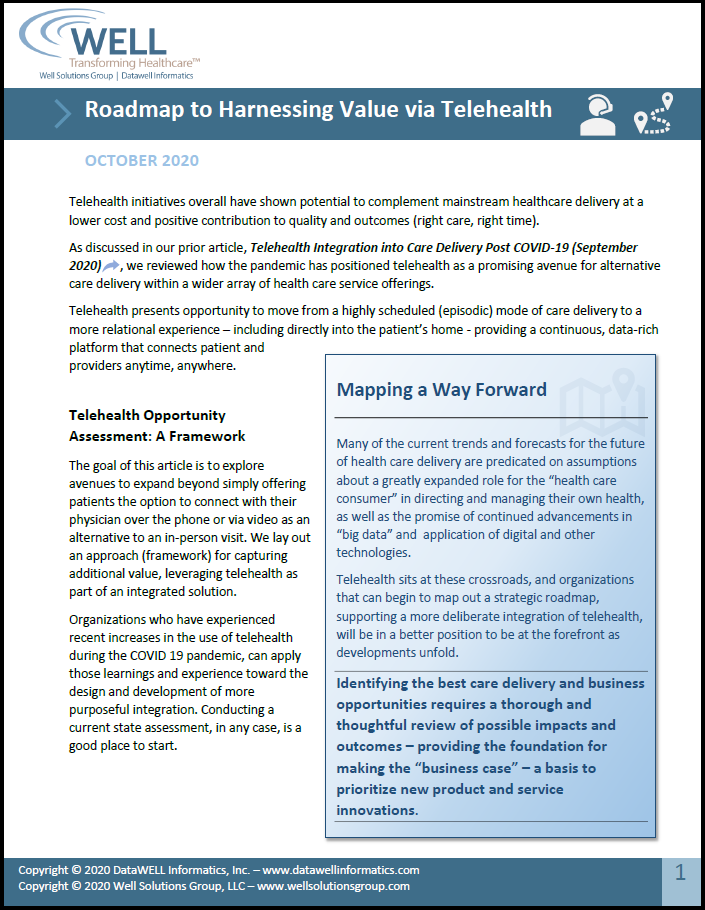In the News
Stories and trends changing the healthcare landscape
CASE STUDY: Improving Patient Care Outcomes
The Healthcare industry is filled with opportunity, with many organizations having the ideal problem of growing too quickly. We are frequently asked by our clients to conduct scalability assessments and suggest prioritized roadmaps supporting rapid growth agendas. As part of that work, we have found several common themes along with some unique considerations relative to growth generated via innovation (“new and different”) versus market and business expansion with current offerings (“bigger and better”).
Building Scalability – Part 3 – Technology
The Healthcare industry is filled with opportunity, with many organizations having the ideal problem of growing too quickly. We are frequently asked by our clients to conduct scalability assessments and suggest prioritized roadmaps supporting rapid growth agendas. As part of that work, we have found several common themes along with some unique considerations relative to growth generated via innovation (“new and different”) versus market and business expansion with current offerings (“bigger and better”).
Building Scalability – Part 2 – Process
Building Scalability – Part 1 – People
Identifying Seniors for Supplemental Benefits-Across the Health and Disease Continuum
COVID–19 pandemic has greatly exposed the critical importance of addressing the health–related social needs of vulnerable populations, especially older adults with complex medical conditions. Historically, single condition management programs have focused on one chronic disease, often missing opportunities to support other health care needs or interventions for primary prevention and health promotion. This represents a missed opportunity to engage Seniors in their own health and wellness activities by using additional benefits for services with greater impact on their overall health and conditions.
Maturing Analytics for Success: Health Care Business Case Development
Healthcare providers and organizations looking to design and market services to supplement and enhance various aspects of health care delivery (from outreach and engagement, to add on features generating improvements in care and outcomes) are constantly challenged with creating the necessary proof points to forecast and validate impact.
The advent of value-based care delivery has opened new opportunities, where it is possible to demonstrate tangible improvements in both health cost and outcomes. However, this requires a more advanced approach to leveraging data and analytics to identify and quantify actionable cause and effect relationships.
Health Services Innovation – A Data-Driven Approach
Getting Started with Consumer Data
Enhancing Healthcare Analytics with Consumer Data
Healthcare organizations are increasingly using consumer data to augment their understanding and insights into the populations they serve, for a variety of purposes – from forecasting health outcomes, risks and future use of services to development of strategies for outreach and engagement. Consumer-generated data includes a wealth of information about individuals – including what they purchase, how they use social media, how many hours their wearable devices say they sleep at night, and other aspects of how and where they live and work.
Roadmap to Harnessing Value via Telehealth
Telehealth initiatives overall have shown potential to complement mainstream healthcare delivery at a lower cost and positive contribution to quality and outcomes (right care, right time).


